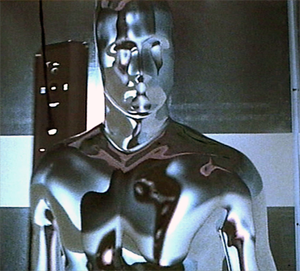How the U.S. military could build a "Terminator"


The cyborg and robot assassins depicted in the Terminator movies were far-fetched at the time, but new technologies have made them more feasible.
This week the U.S. military began testing self-driving, self-shooting robotic vehicles. The Unmanned Systems Team for the Maneuver Battle Lab at Fort Benning, GA asked defense contractors to show off their models in a bid to bring weaponized robots to the battlefield. Drones are becoming more self-aware using advanced AI. Cloud computing, like Skynet in the movies, delivers greater intelligence to a single unit.
There’s massive computer capacity available in the cloud, so the ability for a robot to eventually outthink a human isn’t out of the question. One start-up is designingassistive care robots that would use the cloud. Consumer apps run on commercial services such as AWS; the U.S. military has a datacenter that has so much equipment that it is melting.
That means that Terminator models such as Arnold Schwarzenegger's "800-series" may not be very far off.
The uber scary shape-shifting T-1000 is much further down the horizon, but it's now become possible. MIT scientists have created modular robotic cubes that can self-assemble into many combinations. Algorithms guide the M-block robots to identify each other and coalesce into patterns such as a chair, ladder, or desk. MIT believes that miniaturized “microbots” could one day compose a “liquid metal” android like the T-1000.
Nearly anything is possible with time and resources, and the U.S. military has both. There is a trend toward robotic warfare; the "Terminators" are coming.
(image credit: Wikipedia)
Related on SmartPlanet:
Science has made real life Transformers
This post was originally published on Smartplanet.com